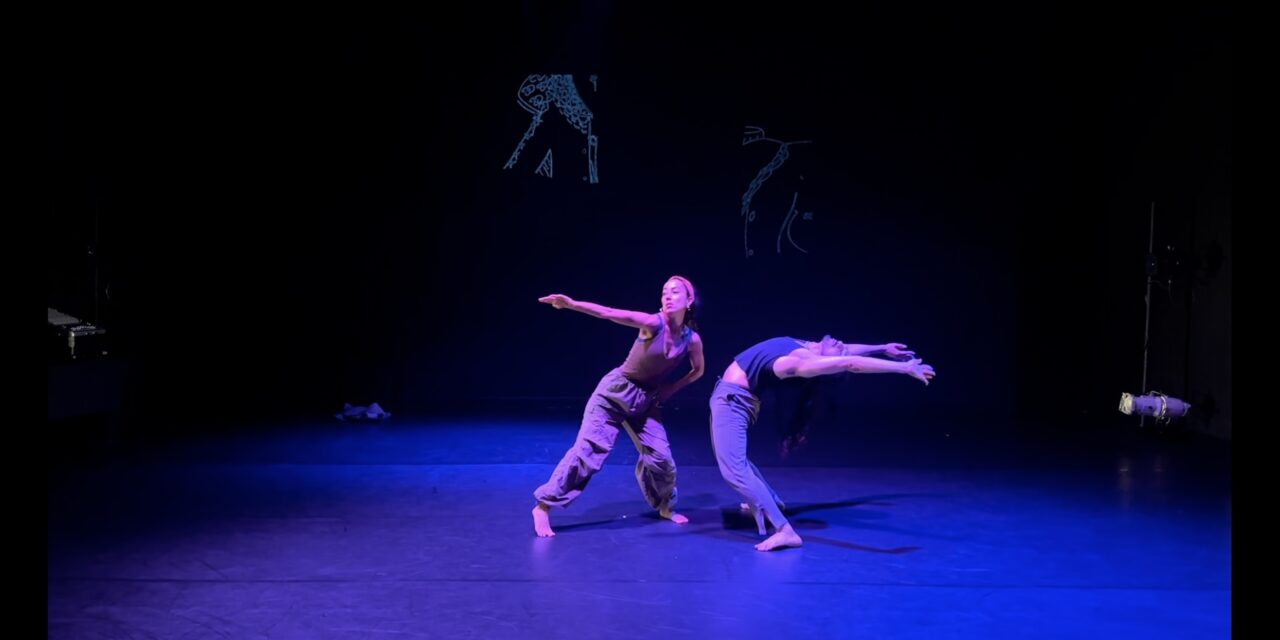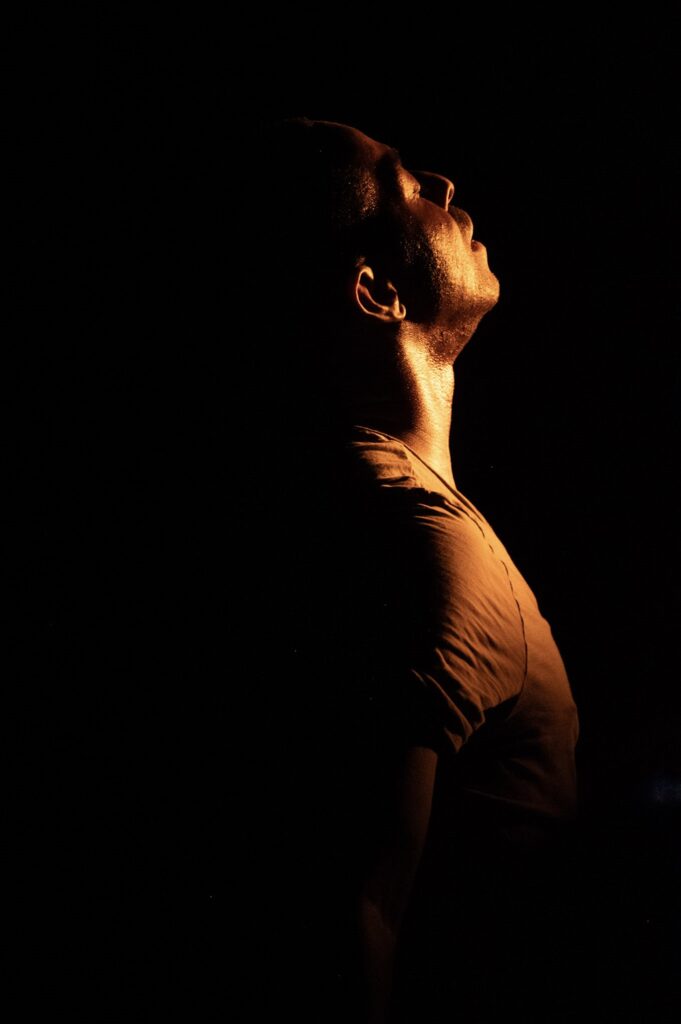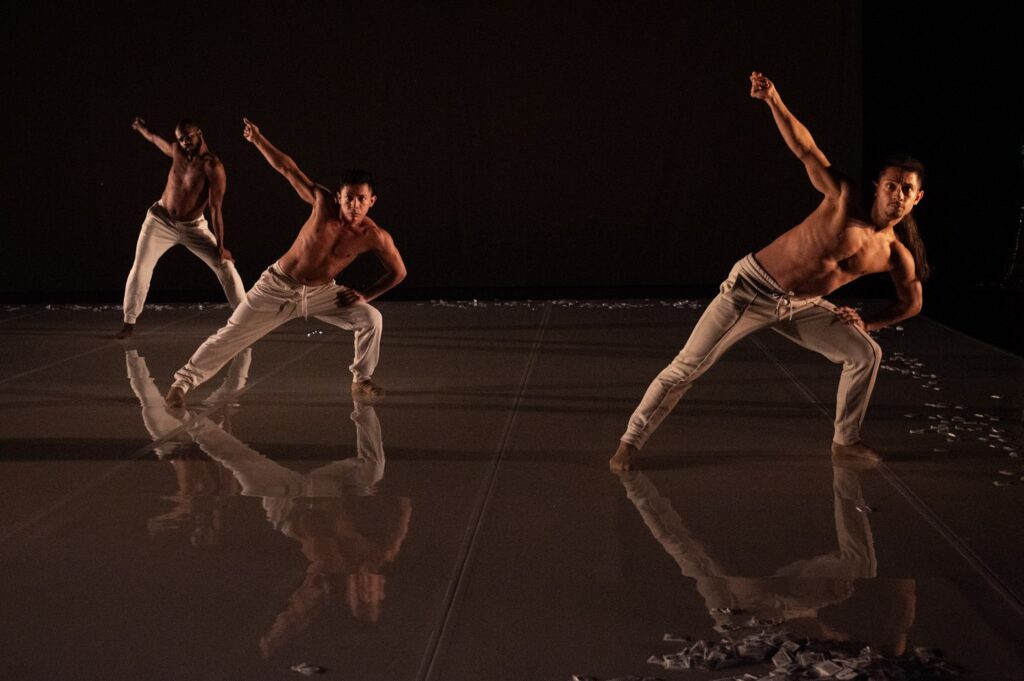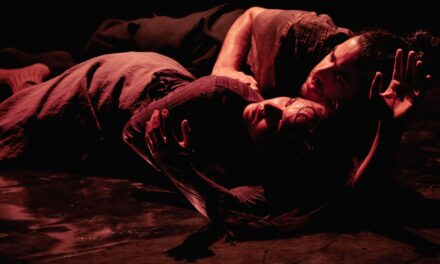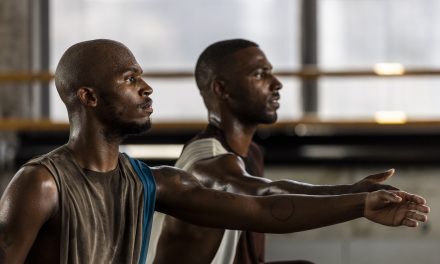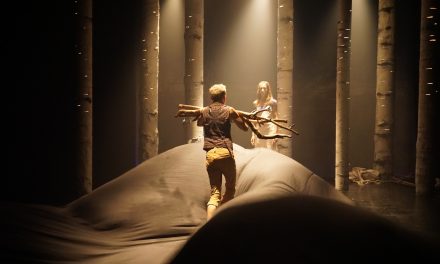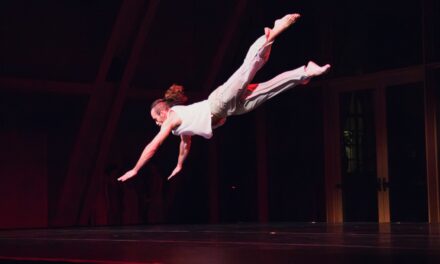On Sat. July 6th I drove over the hill to the Odyssey Theater to see “Fluid Identities: a dance of belonging” and “Sugar Odyssey (or the undrowning).” Curated by Barbara Müeller-Wittmann this is yet another opportunity for lesser known or up and coming companies to be seen and heard through Dance at the Odyssey Summer Edition 2024.
The theater is a perfect black box with a roomy stage and good sightlines from any seat in the house. First up was “Fluid Identities” choreographed and performed by Joey Navarette-Medina and Rosa Rodriquez-Frazier. As the lights come up, we see two black boxes set upstage to be used as stools etc., a screen along the back wall and Medina and Frazier dressed casually in sweats, shirts and jackets. We hear audio signals as the screen comes to life with a large white dot on the black background. The performers begin a dialogue prompted by a voice emanating from the white globe in English and Spanish which is hard to hear and therefore hard to follow, even if you can speak both languages. Once they begin to move things pick up as they are excellent contemporary dancers. The score or sound design is by Medina and Frazier and is mostly voice-overs and ambient noise with minimal to no rhythm. With fluid movement their languid choreography fills the stage as each dancer knows how to work to their full reach. For a while this is relaxing and satisfying until it becomes clear that as the work progresses, we will not see another style or tempo change and almost no unison dancing which makes the movement seem to be improvised completely. Perhaps this is the effect they were going for but in the long run it becomes pedantic and loses its impact. Both these dancers are capable of so much more that it seems the power they have as a team loses its steam as it goes along.

Dance at the Odyssey – Rosa Rodriquez-Frazier (front), Joey Navarette-Medina in “Fluid Identities” – Screenshot by Joey Navarette-Medina.
The program quotes Medina/Frazier in the program notes as saying, “This collaborative project explores queer and Latine diaspora dance within contemporary society, blending autoethnography with dynamic movement to challenge perceptions and celebrate diversity.”

Dance at the Odyssey – (L-R) Rosa Rodriquez-Frazier, Joey Navarette-Medina in “Fluid Identities” – Screenshot by Joey Navarette-Medina.
These are big subjects, and an almost existentialist group of topics to tackle especially in a short dance piece. Most of this did not come through although there were moments of humor and two short monologues that held some interest. The first as told by Frazier regarding her feisty grammar school self who was being bullied and second by Medina who spoke about his connection to Sailor Moon and the bullying that he suffered. These are important issues but neither story truly came to life in a dynamic way. With no musical melody to connect to at any point we could not be fully drawn into the emotions Medina/Frasier were trying to convey.

Dance at the Odyssey – (L-R) Joey Navarette-Medina, Rosa Rodriquez-Frazier in “Fluid Identities” – Screenshot by Joey Navarette-Medina.
As stated above the dancing itself was well executed but repetitive and the concept, though salient in today’s world was murky and under developed. I have seen this duo dance with “Primera Generación” in a show that I enjoyed very much and which had clear lines of storytelling. Perhaps some of the principles applied there might go a long way toward moving this duo forward.
Bernard Brown’s “Sugar Odyssey (or the undrowning)” also struggles with trying to comment on too many disparate issues which truly gets lost in the telling.
“The undrowning explores how activating queerness cultivates a radically intimate care which accents the nuance of people within the African Diaspora.”
This quote from Brown’s program description is indicative of the confused and unfocused message he brings to the stage.
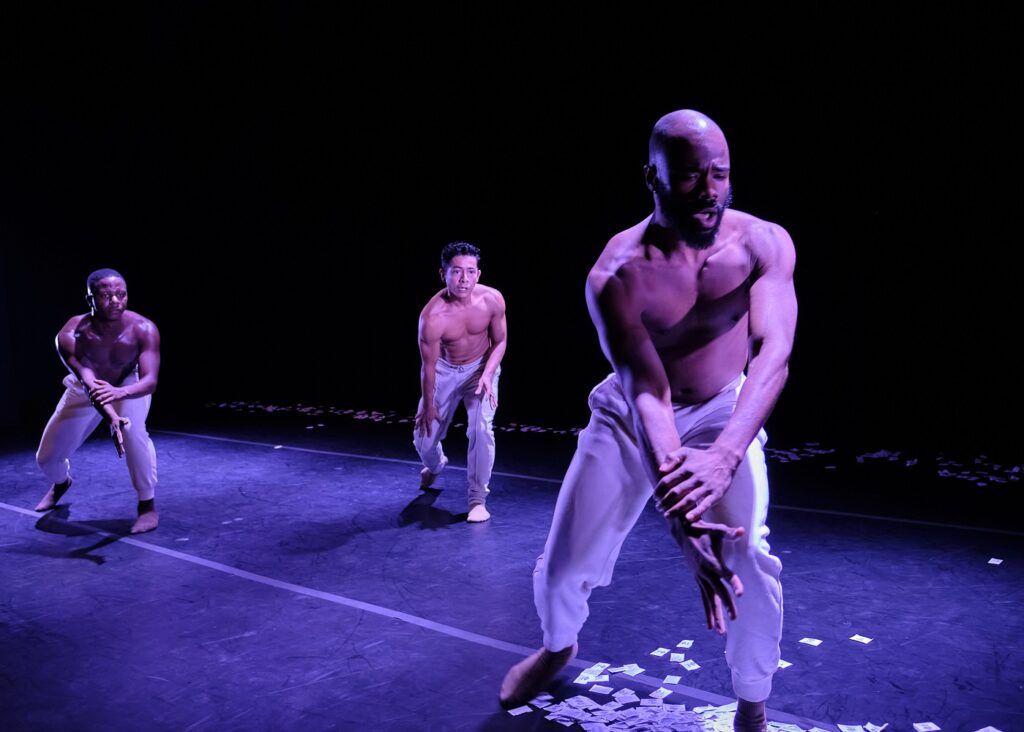
Dance at the Odyssey – “Sweetness of Sweat” by Bernard Brown – (L-R) Quron Clarks, Maxima Lyght, Malachi Middleton – Photo by Robin Meineke.
Brown begins this piece in silence, a collapse to the floor and what appears to be a “fit” while looking at his hand. He rises, he speaks in a hard to hear monologue which is capped by a long series of powerful arm circles perhaps denoting growing anger. To what end is the question not to be answered in this telling. He leaves the stage as three dancers enter, they are Maxima Lyght, Malachi Middleton and Alejandro Perez. A soundscape accompanies their entrance played live by DJ/Composer DeFacto X.
Dancing in a contemporary jazz style the movement seemed to be mostly improvised rather than choreographed. Sexual gyrations abound which are indicative but not sexy. However here and there throughout the piece the trio comes together for unison choreography and the effect is relieving and makes one wish for more of these interludes.
In one section, Brown has a monologue in which he amusingly refers to his excessive use of sugar while making Kool Ade as a nine-year-old boy. Following this he dumps packet after packet of sugar around the stage without clearly explaining his motivation. Later Brown returns by crawling onstage with the empty sugar bucket on his back while singing a mournful song. Brown sings very well with a lovely plaintive voice. Had he stood quietly singing he might have created a moment with real impact but instead we were left to wonder what he was trying to convey. Still later a dancer drops more sugar packets as he walks the stage perimeter. Altogether this was a baffling segment leaving one lost to the intention.
As we come to the finale Brown has choreographed a pas de duex for two of his dancers. Though they are sincere and make as much as possible of this love duet there is no music to ignite the passion and the choreography is surprisingly tame and uninspired.
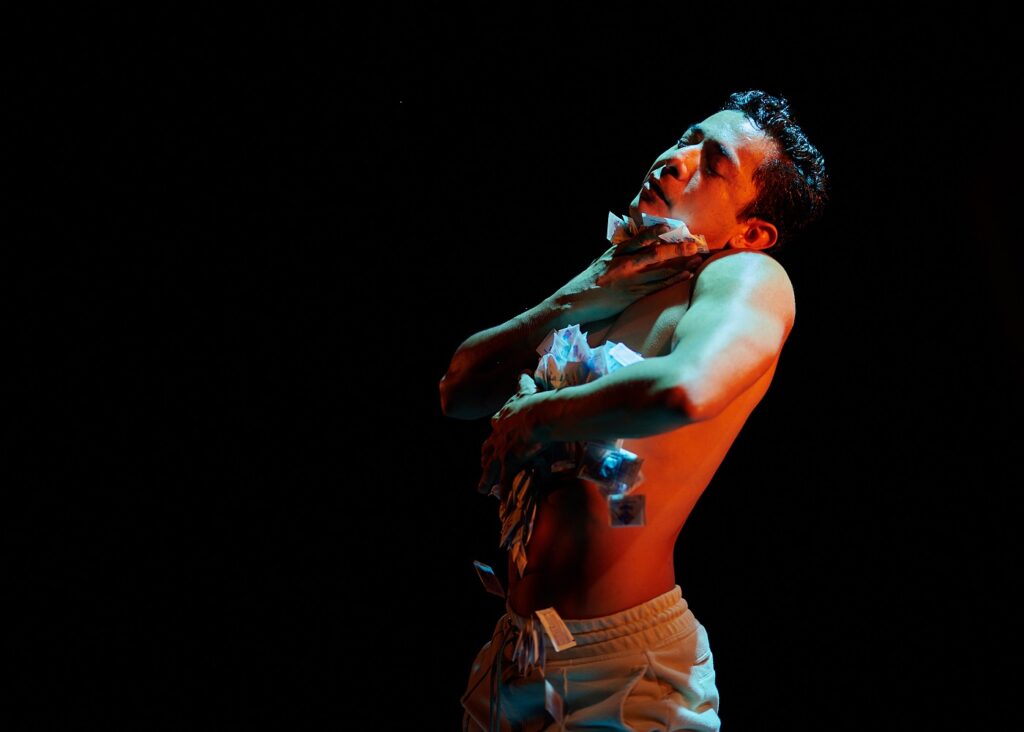
Dance at the Odyssey – “Sweat Sweat” by Bernard Brown – Dancer Maxima Lyght – Photo by Robin Meineke.
With a clear point of view, music that is relatable and more actual choreography Brown is capable of bringing work to the stage that is both relevant and pleasing.
As always, much appreciation must be given to Barbara Mueller-Wittmann and the Odyssey for hosting these important dance events. While some performances are more successful than others all of them are important in bringing more dance to the forefront in LA.
Dance at the Odyssey continues through July 14 with Leah Zeiger (July 11 at 8PM); Kaia Makihara & hasten dance (July 12 at 8:M); TORRENT, Caitlin Javech, Gianna Burright (July 13 at 2pm & 8PM); and G.U.M., Genna Moroni & Helene Bouboulis (July 14 at 2PM).
To learn more about Dance at the Odyssey and to purchase tickets, please visit their website.
Written by Tam Warner for LA Dance Chronicle.
Featured image: Dance at the Odyssey – (L-R) Rosa Rodriquez-Frazier, Joey Navarette-Medina in “Fluid Identities” – Screenshot by Joey Navarette-Medina.

